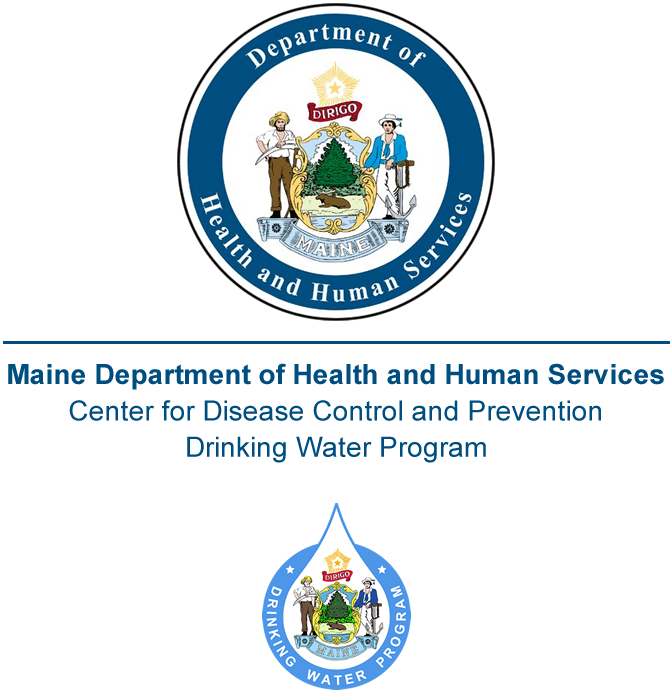Maine DWP Update: Water System Startup Procedures for Vacant Buildings/Establishments
Maine Department of Health & Human Services sent this bulletin at 04/17/2020 02:40 PM EDTThis update is coming to you from the Maine CDC Drinking Water Program.
Having trouble viewing this email? View it as a Web page.
Water System Startup Procedures for Vacant Buildings/Establishments
| Water systems including the internal plumbing system within individual buildings that have been unused for an extended period (weeks, months, years) need to be restarted properly before the water will be safe for consumption. Stagnant water can enable bacterial and/or pathogen growth and can cause unwanted contaminants to leach from pipe materials, all having the potential to cause significant health impacts. To address this problem, water systems that have been stagnant need to be flushed thoroughly and to the extent possible, disinfected before providing water for consumption. |  |
For small water systems (individual buildings or small groups of buildings):
• Flush the system thoroughly, running flushed water outside onto the ground (not into septic systems) and
in compliance with local stormwater rules (if applicable).
• Shock chlorinate the well(s) if possible, following the Procedure for Shock Chlorination of Water Systems
Using Bedrock Wells.
• Have treatment equipment serviced by a professional to make sure it is operating properly.
• If present, replace Point of Use (at the tap) filters.
• For systems with continuous chlorination facilities, ensure the free chlorine residual is 0.2 to 0.7 mg/l.
Running a system with a slightly higher residual (1.0 mg/l) temporarily is recommended to ensure the
proper disinfection of water at startup.
• Take an “Operations & Maintenance” bacteria sample to ensure that drinking water is free of Total Coliform
and E-Coli bacteria.
For buildings served by municipal water districts or departments:
• Using all taps in the building and building main flushing valves, flush thoroughly, with scouring velocity of
three (3) feet per second when possible. Water can be discharged into normal drains for buildings that are
serviced by municipal sewer.
• Measure free chlorine residual (for chlorinated systems) or total chlorine residual (for chloraminated systems)
in water entering and throughout the building. Preferred residuals include 0.2 to 0.7 mg/l with a minimum of
0.1 mg/l free chlorine for chlorinated systems, or 2 to 3 mg/l total chlorine with a minimum of 1 mg/l for
chloraminated systems, at all taps. Nearby hydrants can be used for residual measurement if a sampling tap
at the building entrance is not available. Measuring residuals in the building at the farthest location from the
water service entrance will determine if the disinfectant is present throughout the entire building water system
after flushing.
• If necessary, boost residuals in the water entering the building by working with the water system to either raise
the overall system disinfection residual level (if possible) or by increasing flows of higher residual water toward
the building by adjusting distribution system valves.
• If present, replace point of entry or point of use (at the tap) filters, or have water “polishing” equipment
(e.g. Dunkin Donuts type water filtration) serviced by a professional to make sure it is operating properly.
• Follow the US CDC Guidance for Building Water Systems publication.
• Take an “Operations & Maintenance” bacteria sample(s) to ensure that drinking water from building taps is
free of Total Coliform and E-Coli bacteria.
• For buildings serving as medical facilities or that may house residents susceptible to respiratory illnesses,
consider collecting a sample to test for legionella bacteria. For assistance with sampling for legionella bacteria,
please contact the Maine Drinking Water Program.
Attachment
URLs
• Procedure for Shock Chlorination of Water Systems Using Bedrock Wells:
https://www.maine.gov/dhhs/mecdc/environmental-health/dwp/cet/documents/WellShockingGuidelines.pdf
• US CDC Guidance for Building Water Systems:
https://www.cdc.gov/coronavirus/2019-ncov/php/building-water-system.html
• COVID-19 Resources for Public Water Systems:
https://www.maine.gov/dhhs/mecdc/environmental-health/dwp/pws/covid19.shtml
• Maine CDC Drinking Water Program:
www.medwp.com

